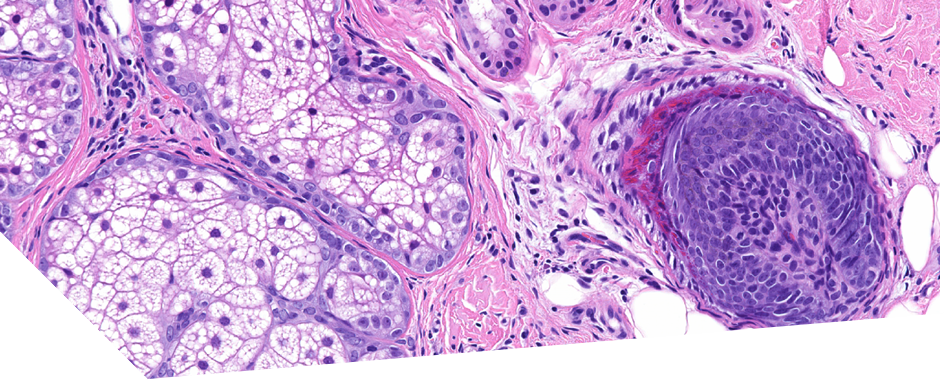Recent study identifies potential new genetic causes for frontal fibrosing alopecia
Frontal fibrosing alopecia (FFA) is an increasingly common hair disorder characterised, in most cases, by a specific pattern of hair loss along the frontal hairline. The exact cause of this condition is complex and likely to be related to both genetic and environmental factors (i.e. multifactorial). A recent exciting new study published in the Journal of Investigative Dermatology (November 2017) looked at how some of the genetic factors might contribute to this disease. In particular, this study examined the role of microRNAs (miRNAs) in the development of FFA.
miRNAs are relatively newly discovered short non-coding RNA molecules found in humans that bind specifically to messenger RNA, involved in the process of gene expression, ultimately resulting in downregulation of protein expression and affecting aspects of cellular function and turnover. In this study, the researchers compared miRNA expression from blood samples of 10 FFA patients and 10 non-affected controls. They found that 55 miRNAs were upregulated in the blood of patients with FFA while 11 miRNAs were downregulated compared to controls.
They also examined miRNA expression patterns in the affected scalps of 7 patients with FFA and compared with 7 non-affected controls. Importantly, they found 9 circulating miRNAs that were more commonly expressed in the scalps of patients with FFA compared with controls. Of these, 4 particular miRNAs were found to be highly linked to the disease. Using new analytical techniques, they discovered that these 4 miRNAs were linked to essential cell signalling, transport and adhesion pathways suggesting possible mechanisms as to how they might contribute to the disease process in FFA.
This exciting study helps us to define further the complex interplay of genetic factors that contribute to FFA and, perhaps more importantly, identifies possible targets for therapeutic intervention in the future for this difficult disease. However, like all gene analysis studies, further research is necessary to determine exactly how these miRNAs might contribute to FFA and how they can be targeted in the future.




0 Comments
Recommended Comments
There are no comments to display.